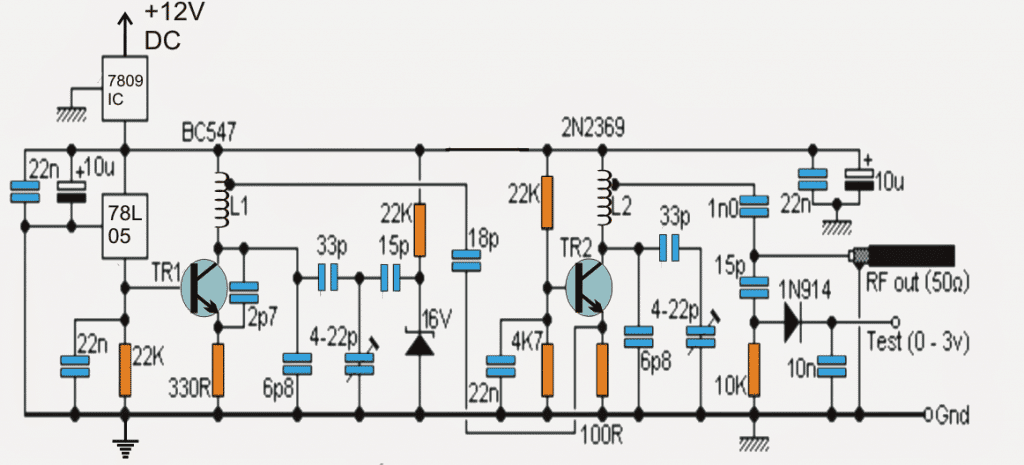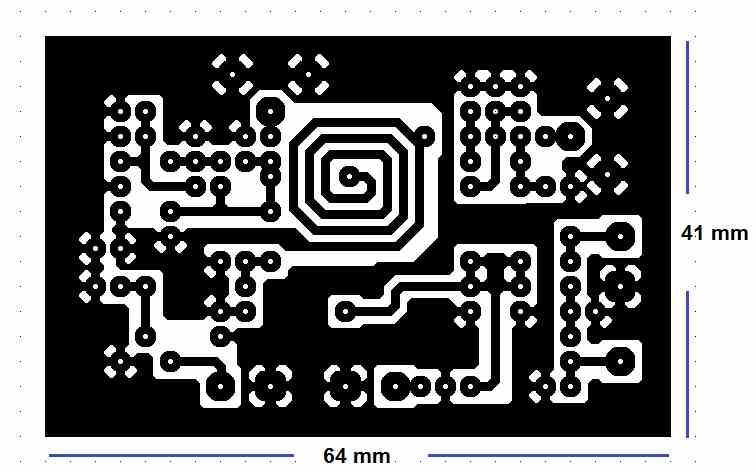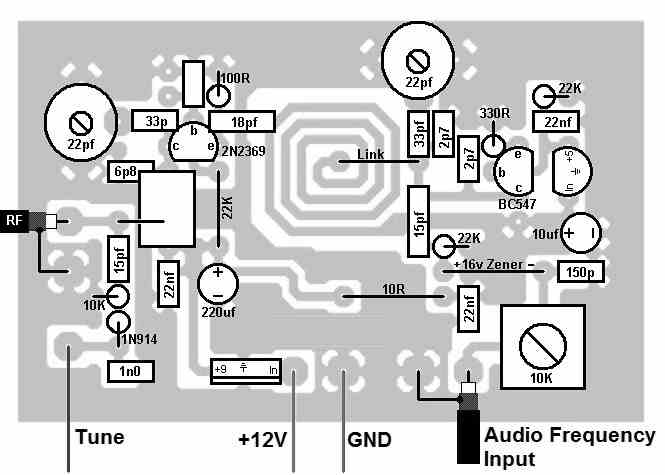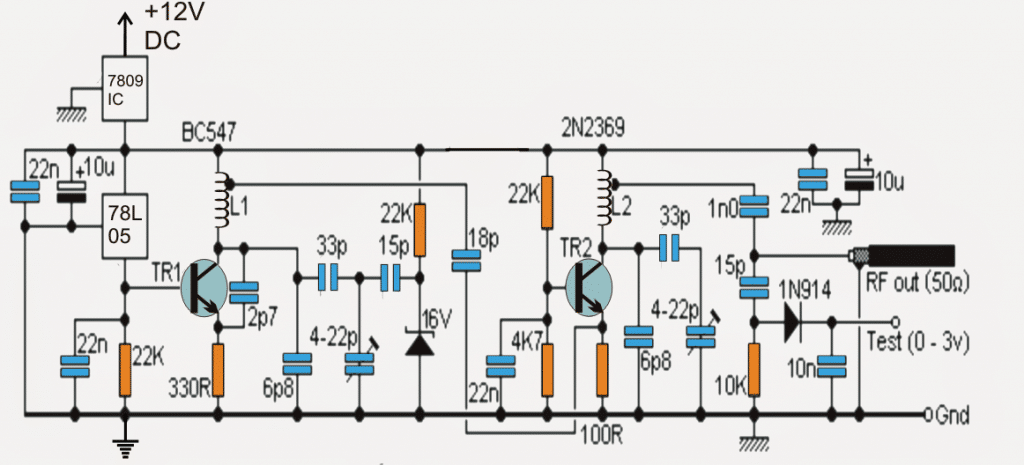The post describes a simple homemade RF signal jammer circuit that can be used for jamming any RF signal within a radial range of 10 meters. The idea was requested by one of the interested readers of this blog.
Technical Specifications
I am not a large business interest, but am in need of a circuit which would not only help me, but eventually be welcomed by just about everyone now alive.
I am in need of a circuit which will jam RFsignals. I realize jammers are illegal when they disrupt cellphone communication and commercial enterprise. I am only looking to jam (1.) remotely controlled harassment devices and (2.) spyware within the confines of my property. Jamming range limited to around a 25' x 25' area.
There is a growing community of victims of electronic harassment. We all experience an invasion of our personal lives/finances and private conversations, and are sometimes physically stalked and attacked.
Due to the nature of electronic harassment, it will take time for justice and protection to catch up and solve the problem. As for electronics, some circuits to control the misuse of flux & solder are long overdue in the marketplace.
Up until now, most of the interest has been placed on projects of invasion and abuse, such as those contained on many different website
I am not overly skilled in electronics, and only come to it in self defense. I am self taught and can follow a schematic and complete a project, and am slowly gaining understanding of the underlying theory.
Please advise regarding your interest to help, and your financial requirements. I look forward to hearing from you.
Circuit Diagram

Parts List
- All resistors are 1/4 watt 5% CFR
- 22 K = 3
- 330 Ohms = 1
- 4.7 K = 1
- 100 Ohm = 1
- 10 K = 1
- Capacitors are all Ceramic Disc, unless specified
- 22 nF = 4
- 2.7 pF = 1
- 6.8 pF = 2
- 33 pF = 2
- 15 pF = 2
- 18 pF = 1
- 10 nF = 1
- 1 nF = 1
- 10 uF / 25 V Electrolytic = 2
- Trimmers 33 pF = 2
- Semiconductors
- Zener Diode 16 V 1 watt = 1
- 1N914 Diode = 1
- TR1 = BC547
- TR2 = 2N2369
- IC7809 = 1
- IC 78L05 = 1
- Inductors = See Text
- Antenna = Telescopic antenna
Introduction
A simple looking RF signal jammer circuit can be seen in the above diagram, which may be capable of jamming all sorts RF signal within the range of 5 to 10 meters.
The circuit can be made suitable with any desired frequency to be jammed by merely using different sets of L1/L2 and by tweaking the 22pF trimmers accordingly.
The frequency that could be jammed using this circuit could be well in the range of 50 MHz to 1Ghz, however making it compatible with frequencies above 500 MHz could get much complex and parameters much critical owing to the fact that higher frequencies require shorter interconnections and may involve other stability issues.
The present design can be used for jamming FM radio stations situated in the within 40 meters radial distance or even higher.
The circuity of the proposed RF signal jammer is basically made of two distinct stages:
RF Circuit Stages
The one comprising T1 and the associated parts form the RF oscillator stage while the other stage consisting of T2 and the complementing parts for amplifying and transmitting the low voltage oscillations from T1 into the air.
The above strong RF carrier signals transmitted by T2 may be appropriately modulated with any external frequency such as an audio or speech by feeding the signal across the terminal indicated "Test".
The circuit is highly stable and doesn't falter with varying input supply voltages due to the presence of the 78L05 voltage regulator at the base of T1 which clamps the base of T1 with a constant biasing current making sure that the oscillations created by the T1 stage stays very stable and consistent.
The above feature is perfectly complemented by the T2 stage which accepts the oscillations from the T1 stage and amplifies and transforms the signals with much higher current so that the signals are able to travel across larger radial distances in the air.
However in order to implement an optimal transmission of the signals, 50 OHM impedance antenna must be used with the output of the circuit.
This could be any ordinary aluminum dipole yagi antenna. A simple flexible wire measuring about a meter would also do but would reduce the transmission strength by about 60 % making the unit much inefficient as far as the transmission range is concerned.
How to Peak the Resonance
The performance of the RF jammer could be highly improved by adjusting the presets to produce peak resonance. This can be done with the following points:
- Connect a 0 - 10V DC voltmeter across the point "test" and the ground line.
- Adjust the right side 22p trimmer such that the meter reads around a maximum of 3V on the meter.
- This might disturb the initial frequency of the system that you might have set for the jamming purpose.
- So go back to the left side 22p trimmer and fine tune it again to set the desired frequency back into place.
Your peak resonance for the circuit is set now, and you can expect maximum efficiency from it.
RF Jammer Coil Specifications
For making the RF jammer compatible with other frequencies, the coil L1 and L2 must be shortened in terms of their number of turns and/or also the diameter...this will need some experimentation until the right frequency is determined.
The adjoining trimmers may also tweaked for getting an optimal response from the jammer circuit or until a perfect jamming is achieved through the circuit.
A good quality, well designed PCB is strictly recommended for constructing the RF jammer circuit
For jamming standard FM broadcasts within a range of 50 meters, L1 and L2 may be built as indicated in the following images:

PCB Etched RF Coil
The above image shows the construction L2 using a 7 turn, 1mm super enameled copper wire with a diameter of approximately 5 to 6mm (internal)....see how the tap is extracted from the relevant end of the coil.

The following image shows how L1 can be designed by etching the tracks on the PCB itself or the same could be built using pieces of diode leads as explained in this FM wireless MIC circuit
PCB Designs


